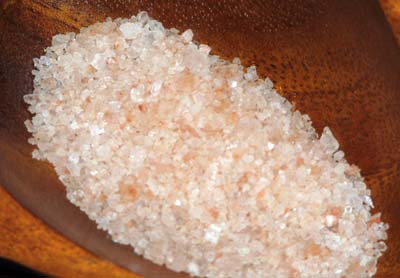
By Lloyd Graff
Salt is the ultimate commodity. Buy a canister of Morton’s off the very bottom shelf at the supermarket for a buck and a quarter and use it for six months, then buy another.
But for a seasoned cook, salt has a flavor that varies with the coarseness of the granule and where it comes from. Sea salt tastes different than mined salt, and rough kosher salt makes better brine than the fine stuff. When I think of salt I envision Tony Maglica, the man behind Mag Instrument, the greatest machining success story of the last 30 years. Tony grew up poor as dirt on a tiny island in the Adriatic. He and his mother survived on the pittance they gleaned by collecting sea salt during and after World War II. For Tony, salt afforded life—if just barely.
Nowadays, when I visit my daughter Sarah in Palo Alto, California, I always check out the Saturday morning farmers’ market. One of the newer sellers is a company called Spice Hound. They sell several different types of salt. I own a Bounds salt grinder and I was looking for the chance to buy something more interesting than Morton’s generic, but I didn’t know what I wanted.
The Spice Hound had 50 different containers of condiments. I certainly didn’t need to buy salt, but I saw a vial of tiny pink rocks labeled “Bolivian Salt.” The Bolivian thing, plus the quartzy pink cast of the crystals pulled me in. I asked the owner of the kiosk business to tell me her story and the story of the Bolivian salt.
As I tasted the salt, I imagined Paul Newman and Robert Redford in Bolivia in Butch Cassidy and the Sundance Kid. I thought of Tony Maglica harvesting salt. I thought of this young Asian girl, Tammy starting a spice business in the pit of a recession. The salt was no longer just salt. It was a sensual, exotic, fresh must-have with an interesting story for only $7.00. I bought it and every time I grind salt for my tomatoes or omelets I think—wow this Bolivian salt is such a delicious luxury.
The task we all face as sellers of products that masquerade as generic commodities, is to give them a living story that sticks. Bolivan salt—pink as the Andes Mountains. Is it really different than Andy’s Machined Products from burned-out Detroit. Maybe the story is about a job for an ex-offender in St. Louis or a chance for a blind machinist in Seattle. We all have a story to tell—if we are worth our salt.
Question: Would you consider buying Bolivian Salt?

3 Comments
After reading this, I am very interested in trying it.
Lloyd, I worry about you. You should not be adding salt to your omelets or tomatoes!
I did enjoy your story about the Bolivian Salt but didn’t you have a heart attack awhile
ago?
Ease up on the salt, but use the good stuff when you have to.
What nonsense. All salt is sodium chloride. Its all the same stuff. Whether its mined as salt deposits milleniums ago by lakes or extracted from current salt water, itrs all the same stuff.
This kind of stuff reminds me of what Warren Buffett said about fancy high cost wines . He said ” maybe the best wines do come from a small area in france, but I suspect that the difference is 99% in the telling and 1% in the drinking ” Many of the so called high end gourmet foods are nothing more than marketing hype. A con job to be frank. So you are now advocating we become con artist as a way to compete. For shame!!